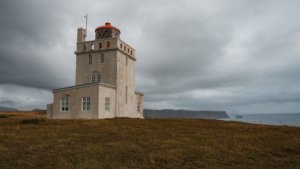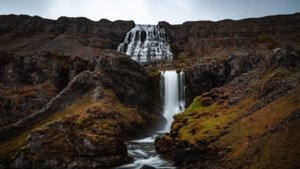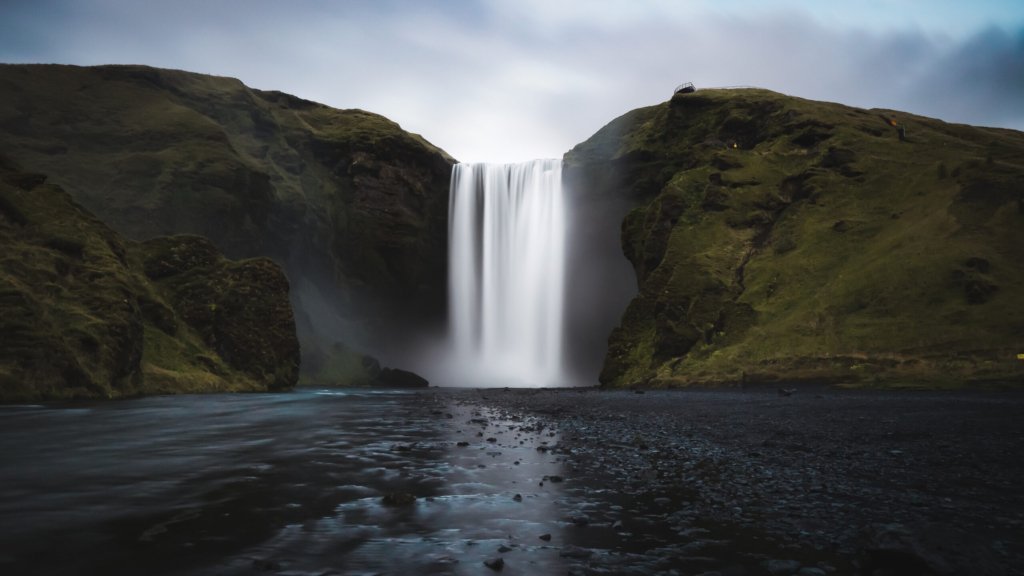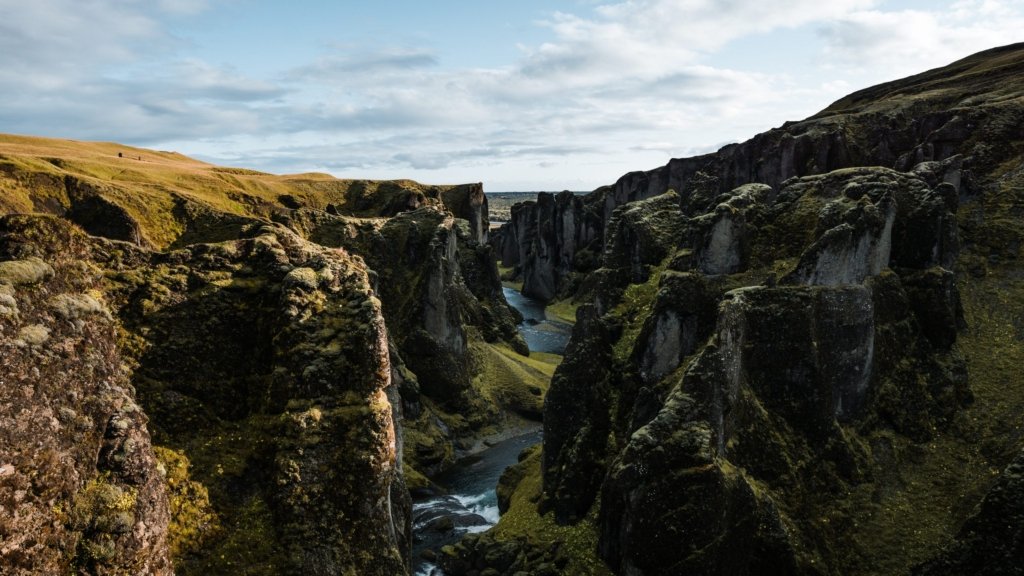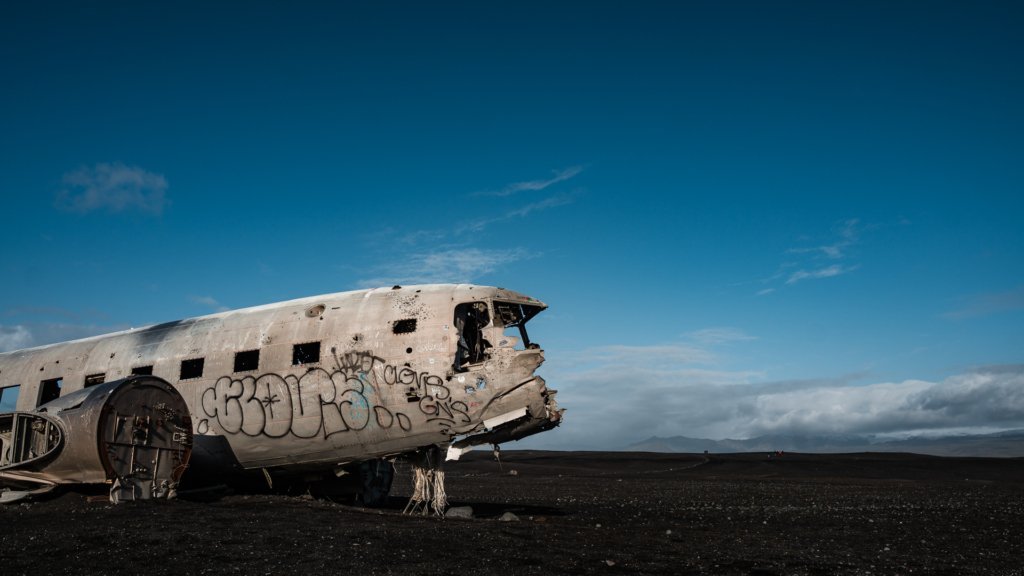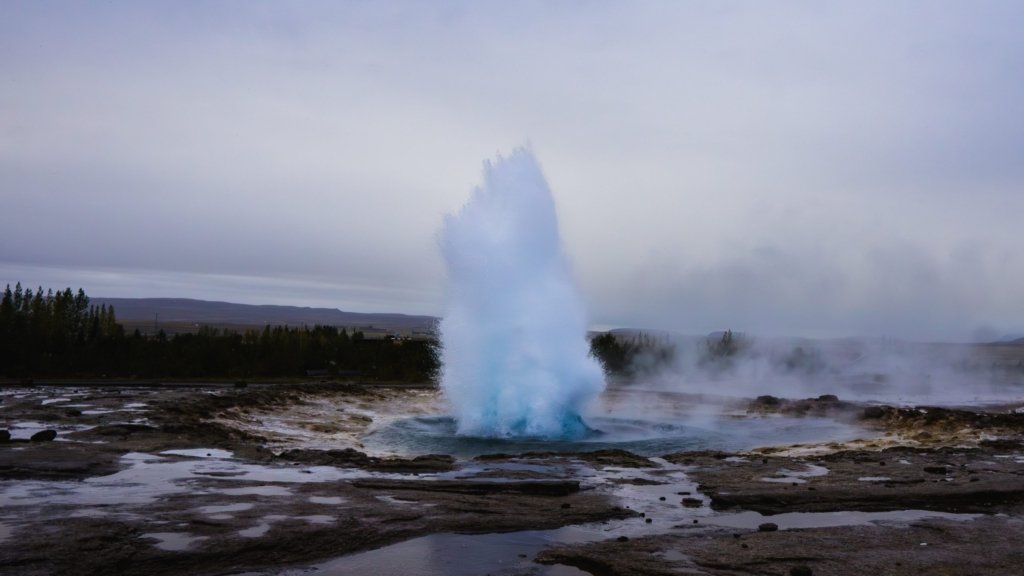“The sight filled the northern sky; its immensity was scarcely imaginable. Great curtains of delicate light hanged and trembled as if from the heavens themselves. Pale green and rose-pink, transparent as the most gentle fabric. They shimmered and floated freely with more grace than the most skilful dancer.” – Aurora Borealis
Auroras are one of the most beautiful, if not THE most beautiful and spectacular phenomenon the earth has in store for us. Many people dream of watching the symphony of light live in the sky, but only a few fulfil this dream.
Where and when can I see the polar lights?
To observe the lights, it is important to be in the right place at the right time. Therefore, you should be aware that there are two different types of Auroras.
Where and when can I see the Northern Lights (Aurora Borealis)?
The further north you travel, the more likely you will be able to see the Aurora Borealis. They are best seen in the polar region close to the magnetic poles. This area is called the Aurora Zone or the Aurora Oval. The best countries to view the Northern Lights in the sky include Iceland, Norway, Canada, Sweden, Finland, Scotland, Greenland and Alaska.
In general, the Northern Lights are present almost all year round. In summer, however, there are far too many hours of sunshine to catch a glimpse of the lights. Even above the Arctic Circle there is not enough darkness. For this reason, the Aurora Borealis can only be seen in winter. Winter in the north lasts from late September until late March or early April. At this time of year, the sky is dark enough for the lights to appear in the sky.
Normally, the Northern Lights appear between 5pm and 2am. They rarely last very long, usually staying only a few minutes and then disappearing, only to return later. However, if you are very lucky, the Aurora Borealis can last for a few hours.
Where can I see the Southern Lights (Aurora Australis)?
Few people even know that the Aurora Borealis can also be seen in the Southern Hemisphere. They are called the Southern Lights or Aurora Australis and are definitely just as beautiful as the Northern Lights in the Northern Hemisphere!
Southern Lights can be found in the more unusual places such as New Zealand, Tasmania (Australia), South Georgia, Falkland Islands, Steward Islands, Ushuaia (Argentina), Antarctica. To see the Aurora Australis, you need a little more patience than for the lights in the North, as they are more unreliable. The best time to see the Southern Lights is during the winter months at the South Pole, more precisely between March and September, which is during summer time in the Northern Hemisphere.
Best conditions to see auroras
The auroras are a natural spectacle and therefore not reliable, punctual or precise. The only thing you can do is be in the right place at the right time. This means either being in the North in winter (Northern Hemisphere) or in the South in winter (Southern Hemisphere).
Weather-wise, it should never be too cloudy. You should wait for darkness, which is not long in coming in the winter months. And then the only thing that remains is to wait and see. However, there are also forecasts – the kp index is generally considered to be very reliable. This prediction corresponds to the planetary magnetic index on a scale of one to nine, where one means little activity and nine means high activity.
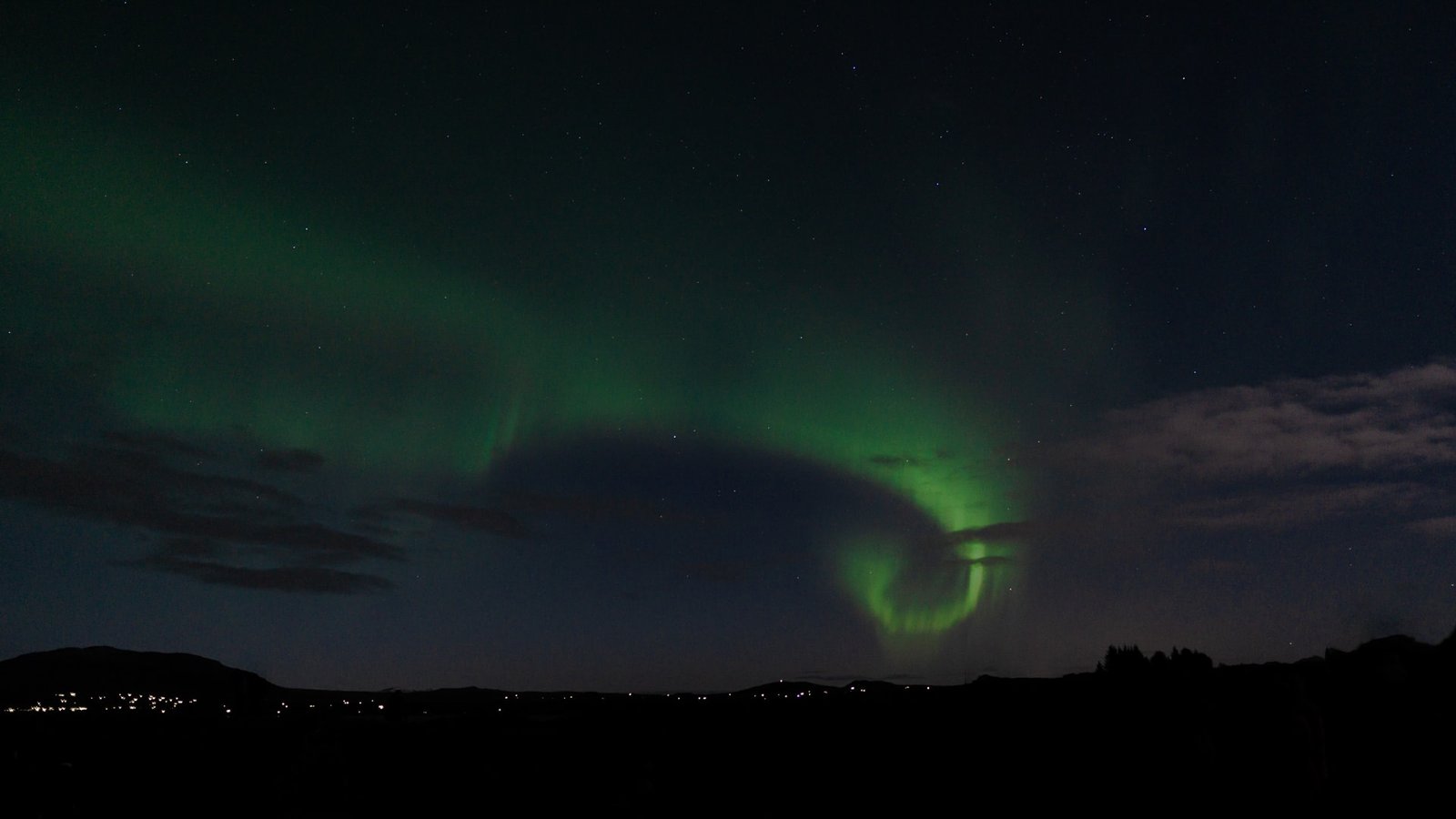
Origin of auroras
Even though Auroras can be explained scientifically nowadays, they are still a natural spectacle and phenomenon. The appearance of the colourful, dancing lights is quite simple to explain.
Why does the sky light up?
Auroras are a constant in the world and are omnipresent, even if you cannot always see them.
Our sun constantly emits matter in addition to light and heat. This process is called solar wind. The matter consists of protons and electrons. These small particles hit the Earth’s magnetic field, which creates an electrical voltage. When these charged particles then collide with molecules in our Earth’s atmosphere, an energy exchange results, whereupon the molecules are activated to glow. The appearance of the aurora occurs almost exclusively in polar regions. The reason for this is the magnetic field, which on the one hand comes together at the poles and is much denser. On the other hand, the charged particles are moved down to the South or North Pole as if through a funnel.
Through a solar flare, the solar wind becomes a solar storm, whereupon many more particles are electrically charged and molecules are stimulated to glow. This leads to even stronger Auroras. However, such a solar flare only occurs about every 11 years.
Why can we see different colours?
The Earth’s atmosphere consists of different atoms that can produce different colours.
Oxygen can produce two different colours. On the one hand, they produce the green tone, the usual colour of Auroras. On the other hand, they can also produce reddish light, when the atoms are on a higher level. However, our eyes cannot recognise the red light as well as the green tone.
Nitrogen produces the beautiful purple light. However, the particles have to hit these atoms much harder than the oxygen atoms, which is why we can only see this colour tone when there is a strong solar wind.
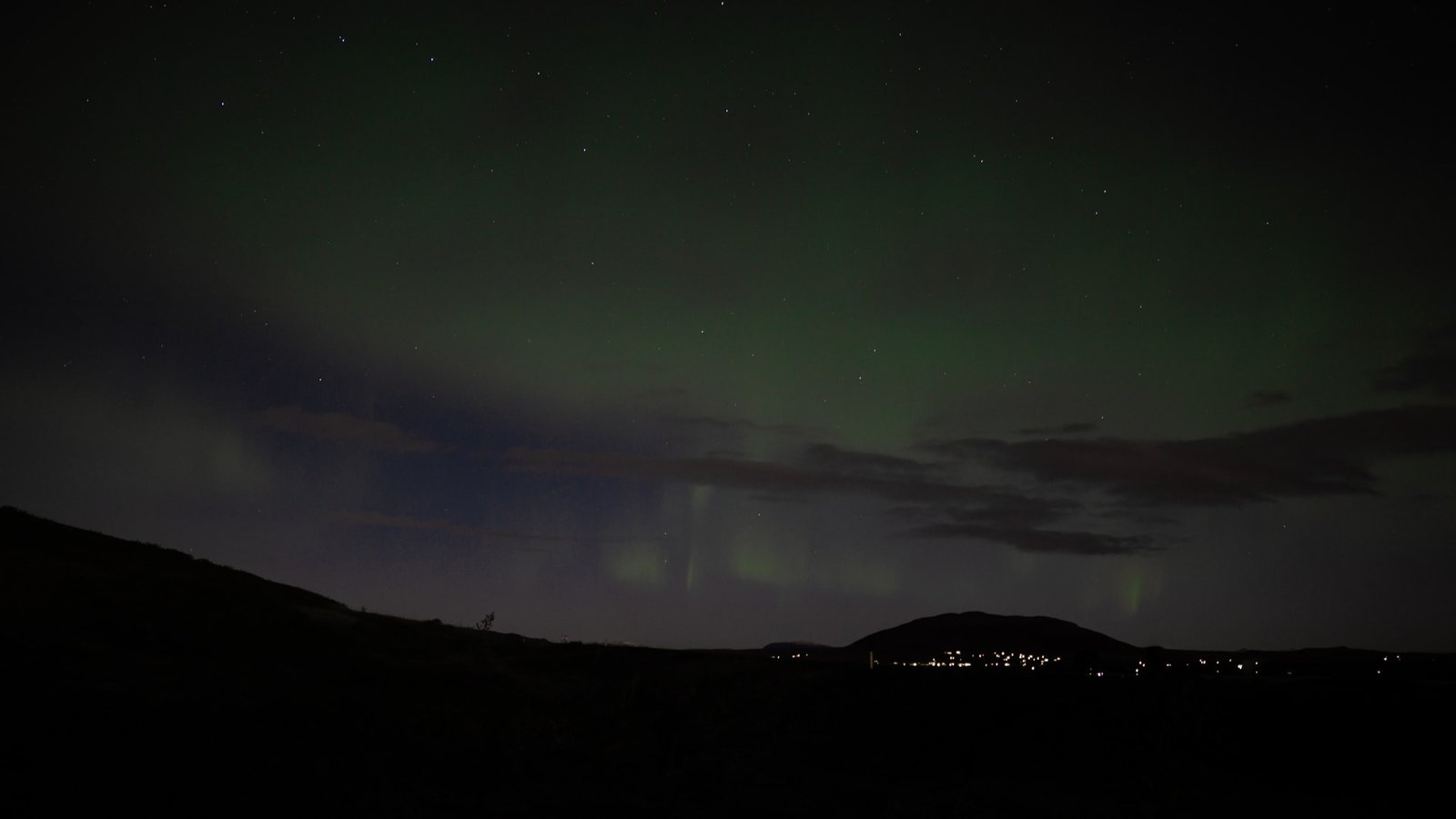
Photography
- To photograph the aurora, you need to set your camera manually.
- A tripod makes it possible to work with longer exposures and thus take sharper photos. In any case, the camera must be kept completely steady!
- Photographing the aurora takes time. Therefore, you should always bring some spare batteries with you. Also, batteries lose their power more quickly in the cold.
- The lens also has an important role to play when photographing the lights. It is important that it is wide-angle so that you can capture a wide range of the sky. It also needs to have an open aperture of at least f4.
- To get a nice picture, you should definitely adjust the sharpness. It is best to start with the infinity setting and then adjust the sharpness as needed.
- There is no ideal ISO for photographing the lights. It depends entirely on the situation and the interaction of shutter speed and aperture. The higher the ISO, the more light is registered, but at a very high ISO, the image also starts to noise.
- The shutter speed is a challenge. Basic rule: If the aurora is bright and active, you can try a shutter speed between 5 and 10 seconds. For a slow-moving aurora, 12 to 20 seconds is recommended. And for a weak aurora, a shutter speed of up to 20 or 25 seconds would be necessary.
- Pictures in the dark are best taken with a wide-open aperture. Choose an aperture of at least f4 to let enough light into the camera. Even better, however, would be f2.8 or even smaller. At apertures higher than this, the images will be very grainy because a high ISO has to be chosen to compensate.
- It is best to set the white balance to “daylight” to prevent the aurora from appearing too yellowish or bluish in your photo.

Myths and legends
Until the polar lights could be explained scientifically, there have been various myths and attempts to explain them.
Nordic
Vikings celebrated the lights. They believed it was an earlier manifestation of their gods.
North American
Stories about the Aurora Borealis originated from the belief that the lights were souls of deceased ancestors.
European
In Europe, several stories were told to explain the occurrence of the Aurora Borealis until the lights could be explained scientifically.



